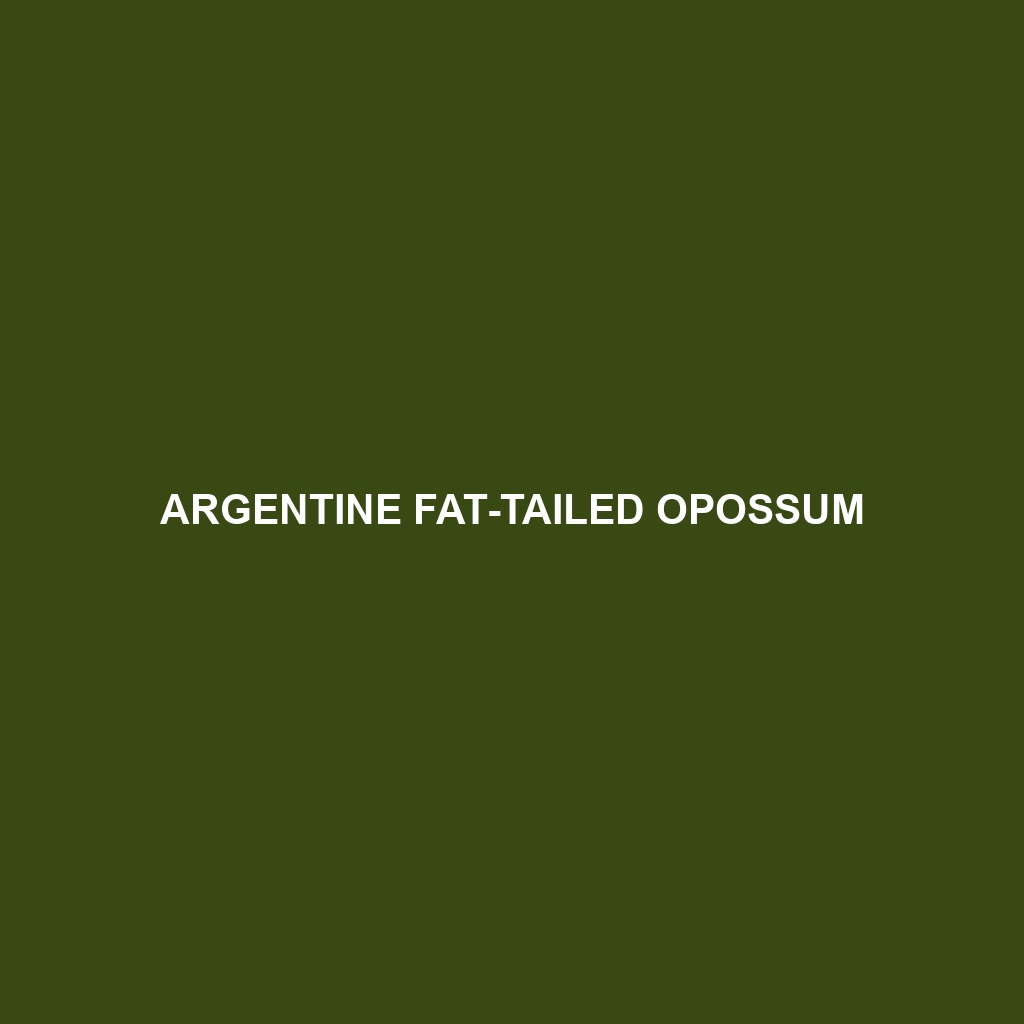Argentine Fat-tailed Opossum: A Detailed Overview
The Argentine Fat-tailed Opossum (Thylamys sponsorius) is a fascinating and unique marsupial native to South America. Known for its distinctive fat-storing tail, this small opossum is an adept survivor in varying habitats. With a combination of intriguing physical characteristics, diverse behaviors, and significant ecological roles, the Argentine Fat-tailed Opossum is a remarkable species that captivates both scientists and wildlife enthusiasts alike.
Physical Characteristics:
Size: The Argentine Fat-tailed Opossum is a small marsupial, typically measuring between 10 to 15 centimeters (4 to 6 inches) in body length, with a tail that can add an additional 8 to 12 centimeters (3 to 5 inches).
Coloration: Their fur is predominantly a soft grayish-brown on the back, with a lighter, often creamy or white underbelly. Some individuals may display darker markings around the eyes, giving them a masked appearance.
Special Features: The most notable feature of this opossum is its fat-storing tail, which is thick and can swell considerably during times of abundance. This tail acts as a crucial energy reserve during periods of food scarcity.
Behaviors:
Social Interactions: Argentine Fat-tailed Opossums are generally solitary animals. They come together primarily for mating purposes and females may occasionally be seen with their young.
Feeding Habits: These opossums are omnivorous, with a diet that includes insects, small vertebrates, fruits, and other plant materials. They are nocturnal foragers, using their keen sense of smell to locate food.
Ecological Roles: As both predator and prey, these opossums play a vital role in their ecosystem. They help control insect populations and serve as a food source for larger predators, such as owls and small carnivorous mammals.
Habitats:
The Argentine Fat-tailed Opossum is found in a variety of habitats, ranging from arid scrublands to forested areas. They are adaptable creatures, capable of thriving in both natural and modified environments, like agricultural lands. Their ability to store fat in their tails allows them to endure periods when food is not readily available.
Adaptations:
Fat Storage: The capacity to store fat in their tails is a critical adaptation for surviving harsh conditions where food can be scarce.
Nocturnality: Being active at night helps them avoid many predators and reduce competition for food.
Arboreal and Terrestrial Abilities: While primarily ground-dwellers, they are also skilled climbers, which aids in escaping predators and finding diverse food sources.
Conservation Status:
Currently, the Argentine Fat-tailed Opossum does not face any major threats that would classify it as endangered. However, habitat destruction and environmental changes could potentially impact their populations. Conservation efforts focus on habitat preservation and monitoring population trends to ensure their continued survival.
Fascinating Fun Facts:
The fat stored in their tails can be used during times of food scarcity, making them somewhat similar to camels, which store fat in their humps.
Unlike many other marsupials, the female Argentine Fat-tailed Opossum does not have a well-developed pouch. Instead, the young cling to her teats and later ride on her back.
They have a unique grooming behavior where they use their hind feet, which possess an opposable toe, to clean their fur meticulously.
The Argentine Fat-tailed Opossum is a resilient and adaptable species with a suite of remarkable traits that enable it to thrive in various environments. Through understanding and appreciating these unique marsupials, we can better appreciate the rich biodiversity of our planet and the intricate roles each species plays in their ecosystems.
